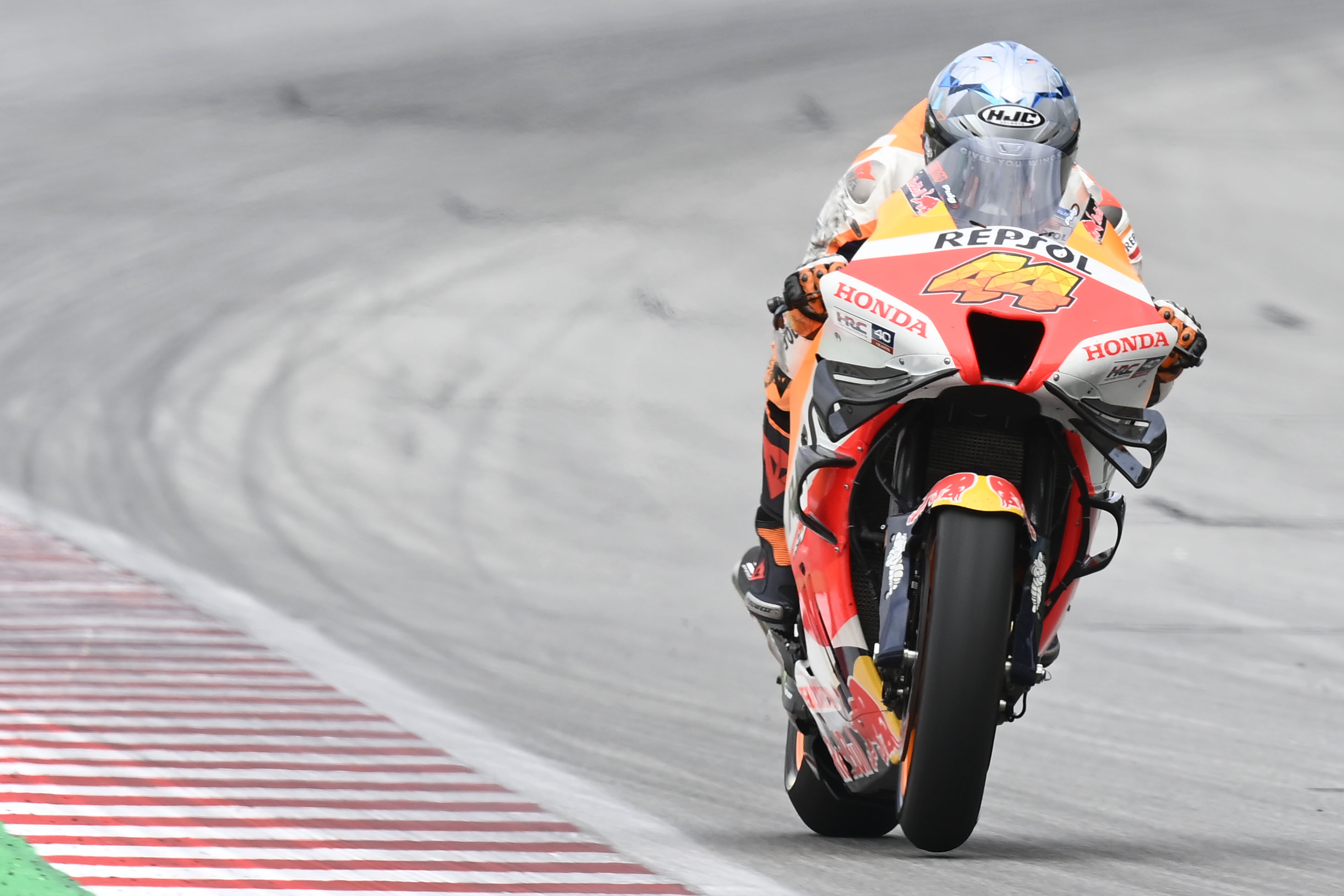The current slump being suffered by Honda and Yamaha in MotoGP is not a consequence of a lack of innovation but specifically an antiquated approach to bike development, series veteran Pol Espargaro suggests.
MotoGP constructors’ standings
Ducati – 363
KTM – 207
Aprilia – 178
Honda – 93
Yamaha – 93
Espargaro had a frustrating two-year tenure in factory Honda colours two sides of stints on the Austrian-made KTM RC16, and had also begun his career as a satellite Yamaha rider.

His comments came amid what has been a truly abysmal Barcelona MotoGP weekend for both Honda and Yamaha so far.
On Friday, the practice session that determined direct passage to Q2 featured a first-for-2023 instance of all six Japanese bikes slotting in neatly at the bottom of classification, not a single one of them picking off any of the Ducatis, KTMs or Aprilias.
For most of the Honda/Yamaha riders, there wasn’t much of an improvement on Saturday either, although Marc Marquez did ‘magic’ his way into Q2 and ran as high as seventh earlier before tumbling out of the top 10.
This hasn’t been the first poor Honda and Yamaha showing in 2023. With the pair left behind in the race for ever-increasing performance from radical new components like aerodynamics and active ride height devices as their European rivals continue to innovate, much emphasis has been put on the impact of the coronavirus pandemic on restricting the Japanese factories’ ability to keep up with the shifting nature of MotoGP recently.
However, speaking on Friday after finishing well ahead of his Repsol machine of last year (now in the hands of 2020 world champion Joan Mir, who finished the day in last), Espargaro said that the issue isn’t so much a lack of development but rather the way in which Japanese factories go about the process of bringing upgrades to their race teams.
“If you compare it to the European manufacturers,” he explained, “they’re not testing anything. They’ve improved very little.
“They have a procedure of testing to implement stuff into the bikes, and it’s super slow compared to the European ones.
“I mean, when they put something, usually, it’s working. Normally. It’s safe.
“But the speed that they’re putting things onto the bike at compared to the European manufacturers is way too slow.”

This ties in neatly with a common complaint of the riders representing Honda and Yamaha, particularly the latter’s 2021 champion Fabio Quartararo. “It’s three years that we’ve had the same bike,” Quartararo said after a fruitless sprint.
And the contrast is something that has been evidenced in the comparison between Honda/Yamaha and Aprilia in particular at Montmelo, with the Italian firm bringing an experimental new clutch for satellite racer Raul Fernandez to try out – a move that he admitted backfired and hindered his chances of a Q2 spot.
“We were working on a new clutch to try and improve our start,” he explained afterwards. “Aprilia gave me something to try differently on the start, and honestly I liked it, but when we were riding, I had a lot of vibration [from it]. I couldn’t ride the bike like this.

“Sure, the principal goal today was to try something for Aprilia. Because I think our kryptonite is the starts.”
The more cautious developmental approach among Honda’s and Yamaha’s engineers is why next week’s post-race test at Misano is so important for their future successes.
Expected to both deliver new 2024-spec bikes to their premier-class champions at the one-day outing, it’s entirely possible that the initial feeling from their riders will determine their entire future career paths, should the two factories fail to bring something truly significant in terms of upgrades.





